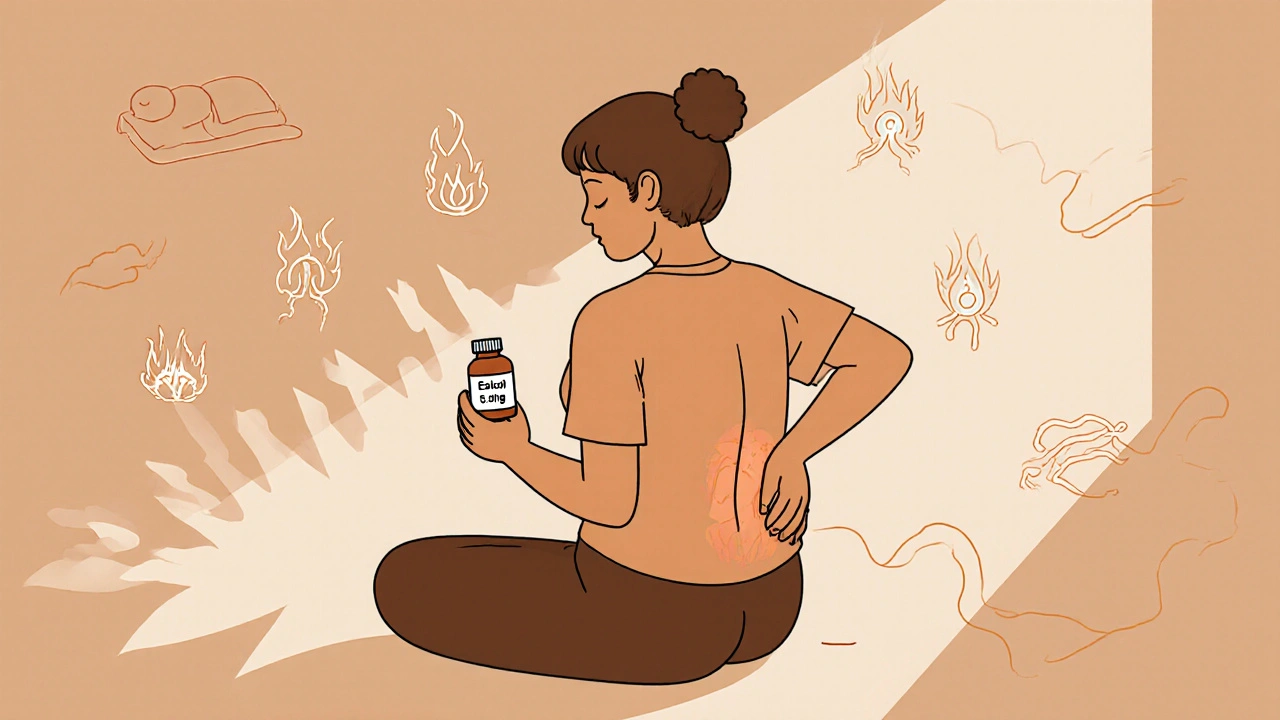Estriol, a weak estrogen, is being used off-label to treat chronic pain in postmenopausal women. Research shows it can reduce fibromyalgia, osteoarthritis, and neuropathic pain with fewer risks than stronger hormones.
Estriol: What It Is, How It’s Used, and What You Need to Know
When it comes to estrogen, most people think of estradiol—but estriol, a weaker form of estrogen naturally produced during pregnancy and used in hormone therapy for menopause symptoms. Also known as E3 estrogen, it’s one of the three main estrogens in women, and unlike estradiol, it doesn’t strongly stimulate breast or uterine tissue. That’s why many women and doctors turn to it for relief from hot flashes, vaginal dryness, and urinary issues—with fewer risks. Estriol isn’t as powerful as other estrogens, but that’s often the point. It’s gentle. It’s targeted. And for women who can’t tolerate stronger hormone therapies, it’s a practical alternative.
Estriol is most commonly used in hormone replacement therapy, a treatment designed to restore estrogen levels in women experiencing menopause, especially when symptoms are focused on the vaginal area. You’ll find it in creams, suppositories, and sometimes oral tablets. It’s also used in combination with other hormones like estradiol and progesterone in custom-compounded formulations. Unlike synthetic estrogens, estriol is often labeled as bioidentical hormone, a hormone that matches the molecular structure of what your body naturally produces. That’s why some women feel better on it—they’re not fighting their own biology.
But estriol isn’t a magic fix. It doesn’t work for everyone. Some women need stronger estrogen to manage bone loss or severe hot flashes. Others find it helps with bladder control and recurring UTIs, especially after menopause. And while it’s often seen as safer than conventional HRT, it’s not risk-free. You still need to talk to your doctor before starting, especially if you’ve had breast cancer, blood clots, or liver disease. The posts below cover real cases: women who switched from estradiol to estriol and saw fewer side effects, others who used it with vitamin D to improve vaginal tissue health, and even how it interacts with common meds like blood thinners and thyroid pills.
You’ll find guides here on how estriol compares to other estrogen options, what to expect when you start using it, how to spot signs it’s not working, and how to avoid scams selling unregulated estriol products online. There’s also advice on managing dryness, itching, and urinary discomfort—problems many women don’t realize can be tied to low estriol levels. Whether you’re exploring options after a bad reaction to other hormones or just looking for a gentler path through menopause, the information here is grounded in what actually works for real people—not marketing hype.
